Author: Matt Del Fiacco
Brewers these days have a number of base malts to choose from, ranging from lightly kilned Pils malts to darker options like Munich II, all of which are believed to impart unique characteristics to beer. Even within certain categories of base malt, there exists different types whose flavor is said to be a function of barley species, malting approach, and kilning method, among other things. And many of the most favored base malts originated from specific regions where they’re known to be used in the production of common styles of beer.
An example of one such malt is Golden Promise, a pale malt that’s viewed by many as necessary to the production of authentically flavored Scottish Ale. Seen as a Scottish counterpart to the English Maris Otter malt, Golden Promise is said to impart a sweet, nutty flavor and improve mouthfeel without having much of an impact on beer color.
As one of my favorite style categories, making better Scottish ale is a constant pursuit of mine, though despite this love, I rarely have Golden Promise on hand. I’m aware of several excellent commercial Scottish beers that don’t use Golden Promise as their base malt, which left me curious just how different its character is from more standard Pale Ale malts. Having relied on the latter for many a tasty beer, I put it to the test to see for myself!
| PURPOSE |
To evaluate the differences between beers made entirely with either Golden Promise malt or UK Pale Ale malt.
| METHODS |
In order to keep the variable front-and-center, I went with a single malt recipe loosely modeled after my Scottish Heavy for this xBmt.
Sweet Brother Numpsay
Recipe Details
| Batch Size | Boil Time | IBU | SRM | Est. OG | Est. FG | ABV |
|---|---|---|---|---|---|---|
| 5.5 gal | 60 min | 15.0 IBUs | 3.0 SRM | 1.040 | 1.011 | 3.7 % |
| Actuals | 1.04 | 1.01 | 3.9 % | |||
Fermentables
| Name | Amount | % |
|---|---|---|
| Golden Promise OR Pale Ale Malt | 8 lbs | 100 |
Hops
| Name | Amount | Time | Use | Form | Alpha % |
|---|---|---|---|---|---|
| East Kent Goldings (EKG) | 14 g | 60 min | Boil | Pellet | 5 |
| East Kent Goldings (EKG) | 16 g | 15 min | Boil | Pellet | 5 |
Yeast
| Name | Lab | Attenuation | Temperature |
|---|---|---|---|
| Tartan (A31) | Imperial Yeast | 73% | 65°F - 70°F |
Notes
| Water Profile: Ca 80 | Mg 2 | Na 10 | SO4 125 | Cl 62 |
Download
| Download this recipe's BeerXML file |
My brew day began with me turning on the elements in my kettles to warm up the water I’d collected and adjusted to my desired profile the night before.

As the water was warming up, I weighed out and milled identical amounts of either base malt for each batch.
With the water adequately heated, I mashed in and checked to ensure each batch hit the same target mash temperature.
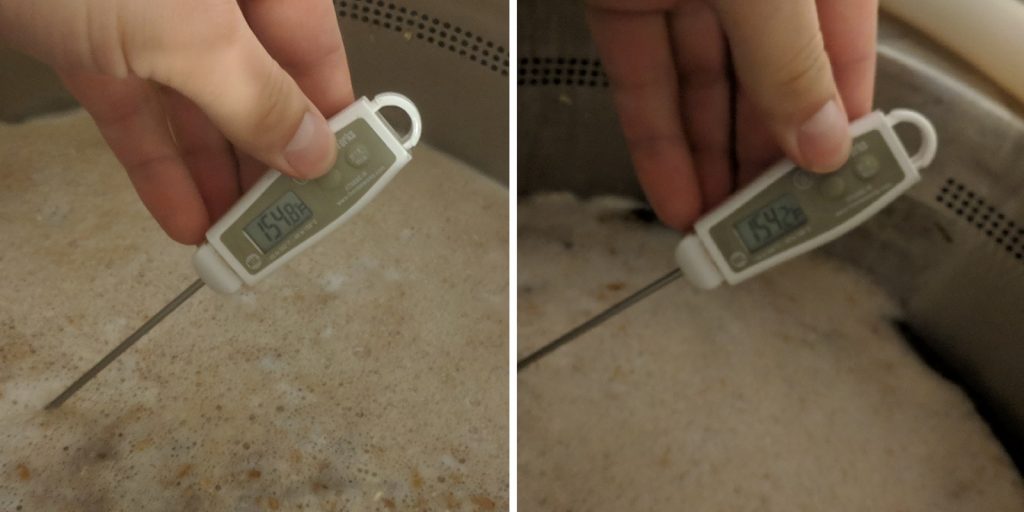
I weighed out the kettle hop additions for each batch during the mash.
Following the 60 minute saccharification rest, I removed the grains and began heating the wort. Each wort was then boiled for 60 minutes with hops added per the recipe.
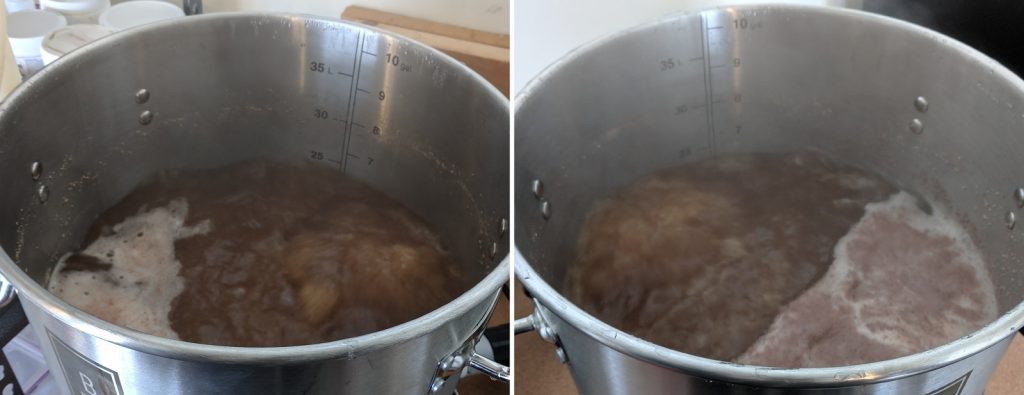
At the completion of each boil, the wort was transferred through a plate chiller on its way to sanitized fermentation kegs.
Using remnant wort from each batch, I made vitality starters with Imperial Yeast A31 Tartan.
Hydrometer measurements revealed both worts achieved the same OG.
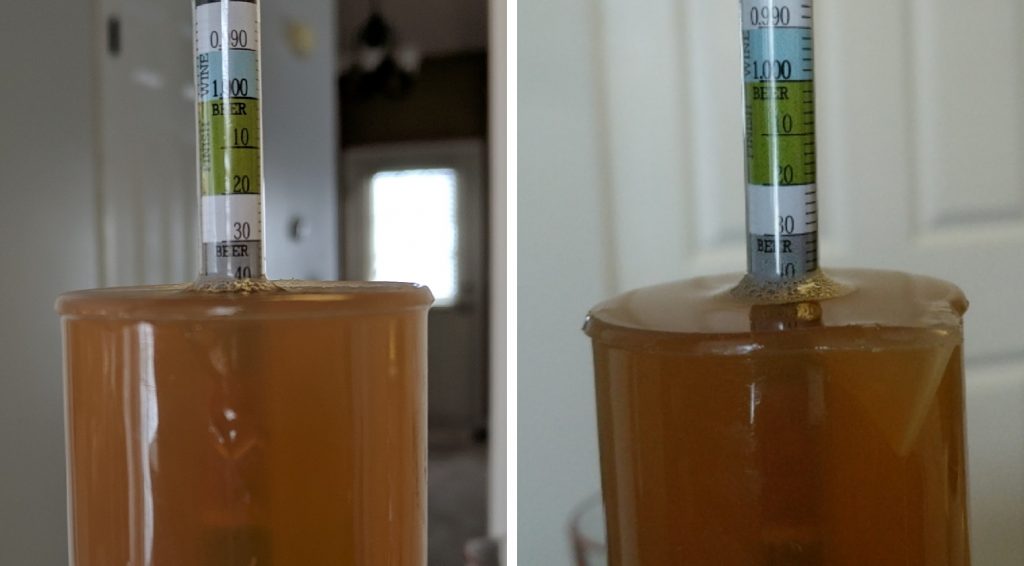
The filled fermentation kegs were placed next to each other in a chamber controlled to 66°F/19°C and given time to finish chilling before I returned to pitch the yeast.
With diminished activity after 5 days of fermentation, I to hydrometer measurements confirming both beers had reached the same FG.
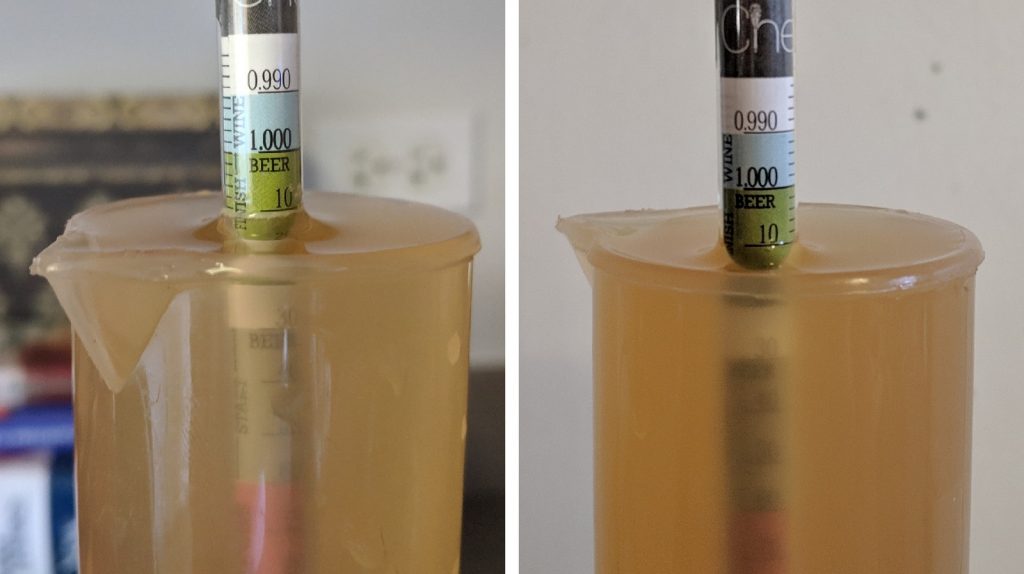
I proceeded with pressure transferring the beer to separate CO2 purged serving kegs.
The filled kegs were placed in my cool kegerator and put on gas. After a couple weeks of cold conditioning, both were equally carbonated and ready to serve.
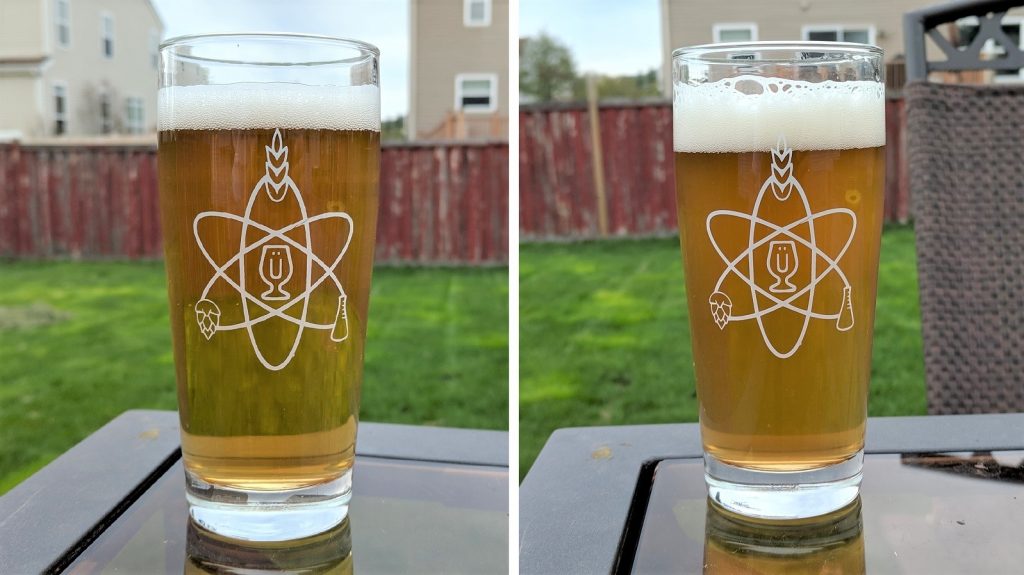
| RESULTS |
A total of 22 people of varying levels of experience participated in this xBmt. Each participant was served 1 sample of the Golden Promise beer and 2 samples of the Pale Ale malt beer in different colored opaque cups then asked to identify the unique sample. While 12 tasters (p<0.05) would have had to identify the unique sample in order to reach statistical significance, only 9 (p=0.29) made the accurate selection, indicating participants in this xBmt could not reliably distinguish a beer made with Simpsons Finest Pale Ale Golden Promise malt from one made with Muntons Pale Ale malt.
My Impressions: Out of the 6 triangle tests I attempted, I selected the odd-beer-out 4 times, just slightly better than chance. While I felt beer made with Pale Ale malt was a bit grainier than the one made with Golden Promise, they were far more similar than they were different, to the point I really had no preference.
| DISCUSSION |
Golden Promise is viewed by many as being not only the key to producing authentically flavored Scottish Ale, but a high quality base malt that adds a sophisticated to touch any range of beer styles. Whereas most other Pale Ale malts are known for their richer malt flavors, Golden Promise is said to impart a unique nutty sweetness and nice mouthfeel. However, the fact tasters in this xBmt could not tell apart beers made with either Golden Promise or Pale Ale malt suggests they may not be as different as many claim, at least when used as the sole grain in Scottish inspired ale.
Considering these results in light of a previous xBmt on Maris Otter, I can’t help but wonder about how Golden Promise would compare to a domestic pale 2-row malt, which is said to be less characterful than UK Pale Ale malts. Likewise, I’m curious how different a single malt Maris Otter beer would be from one made only with Golden Promise, as some view them as being interchangeable.
Going into this xBmt, and having used Golden Promise in the past, I wasn’t convinced the beers were going to be that different, and my personal experience with these beers confirmed that. As such, and despite my admiration for Scottish brewing tradition, I’ve no plans to start stocking Golden Promise in my brewery. That’s not to say I don’t like it, I really do, it’s really more a matter of convenience for me.
If you have any thoughts about this xBmt, please do not hesitate to share in the comments section below!
Support Brülosophy In Style!
All designs are available in various colors and sizes on Amazon!
Follow Brülosophy on:
FACEBOOK | TWITTER | INSTAGRAM
If you enjoy this stuff and feel compelled to support Brulosophy.com, please check out the Support page for details on how you can very easily do so. Thanks!


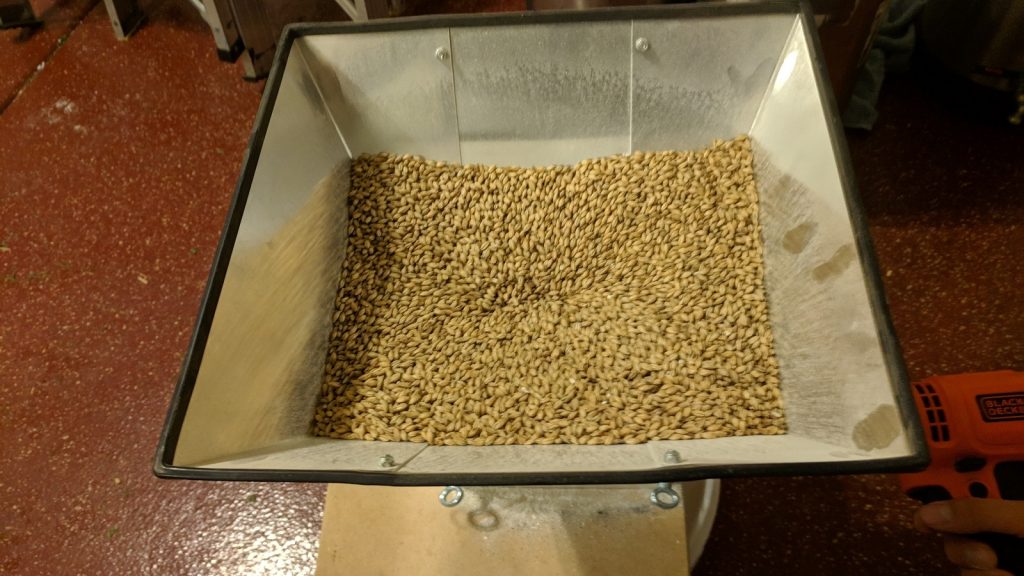
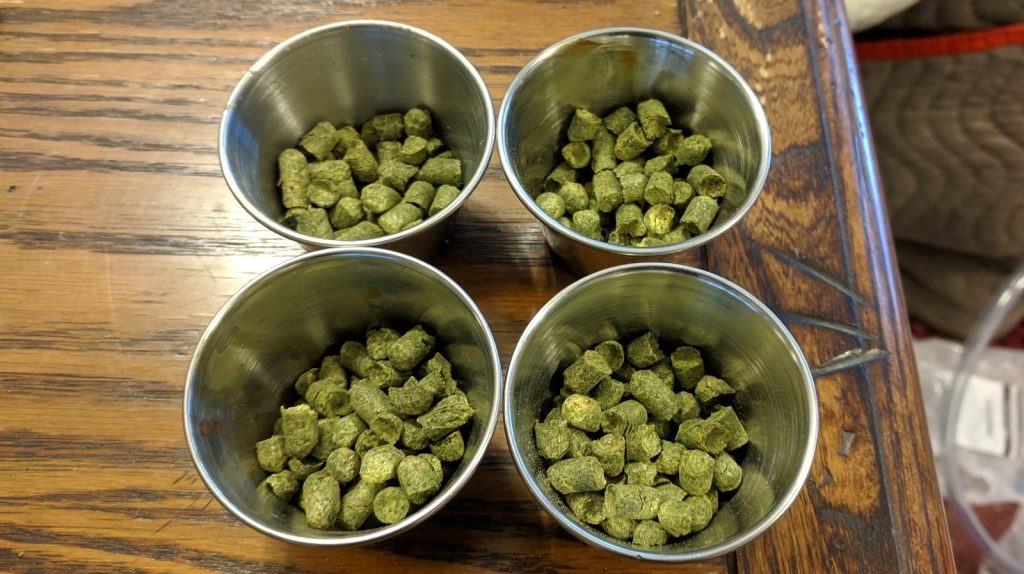
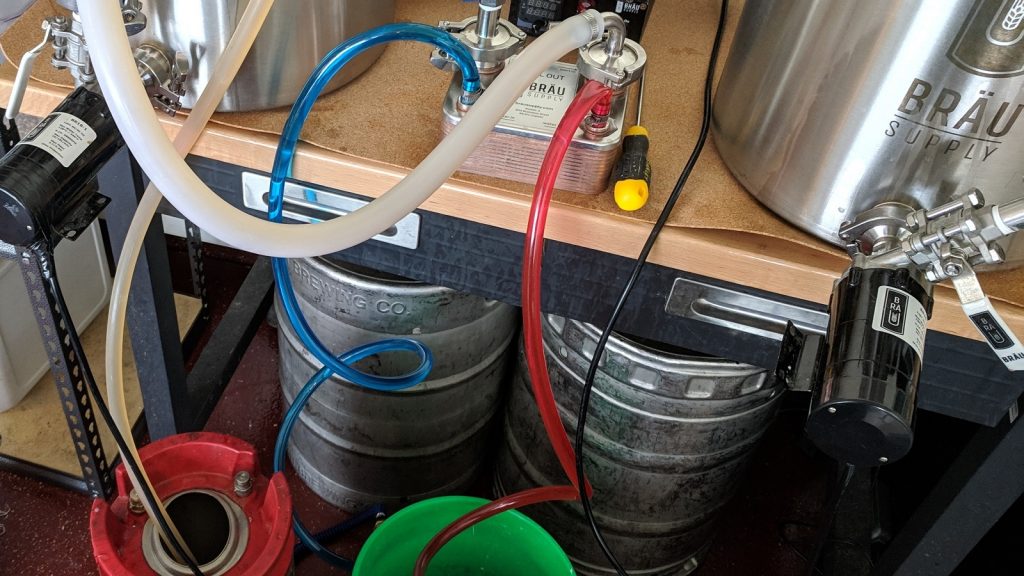
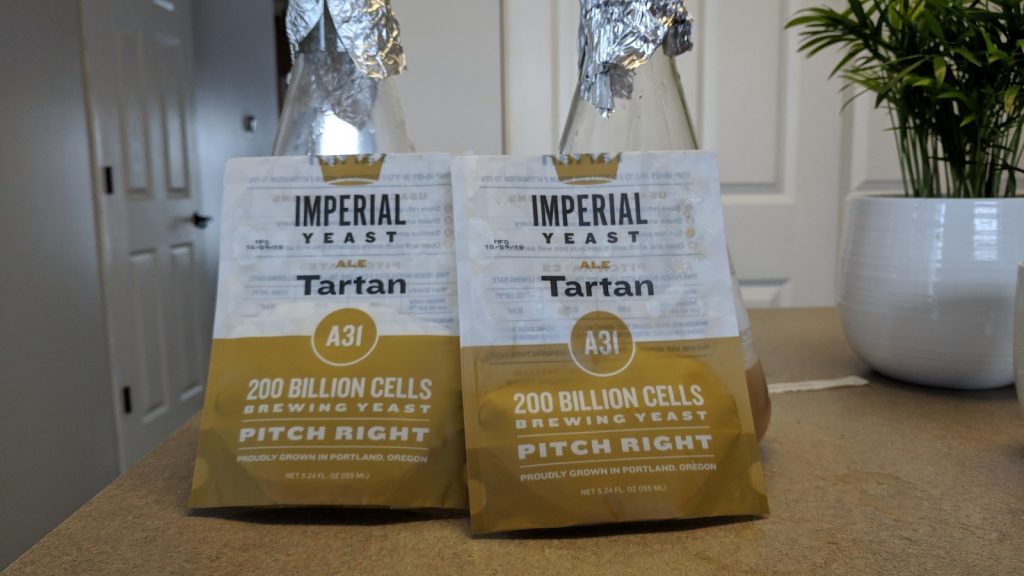
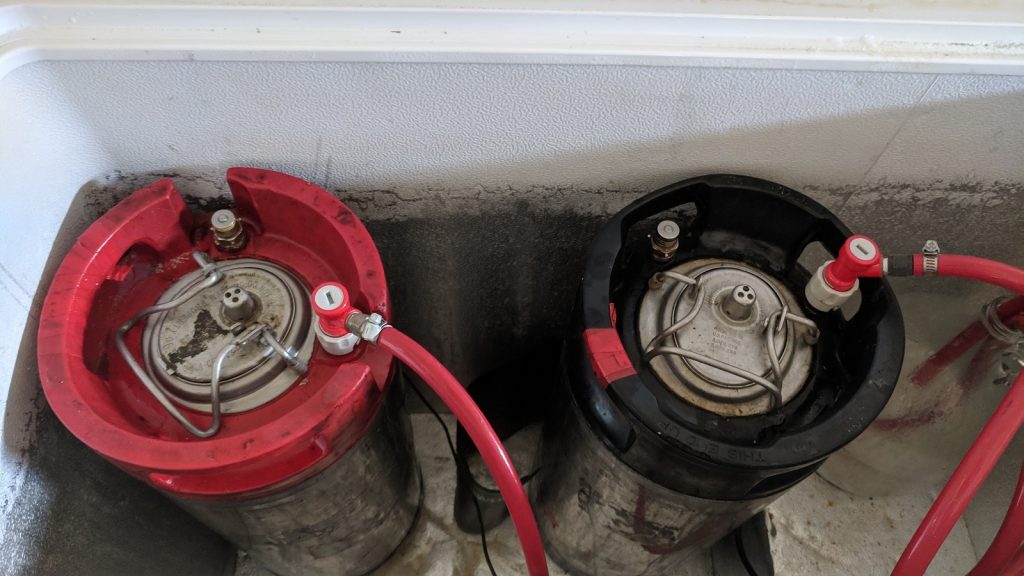
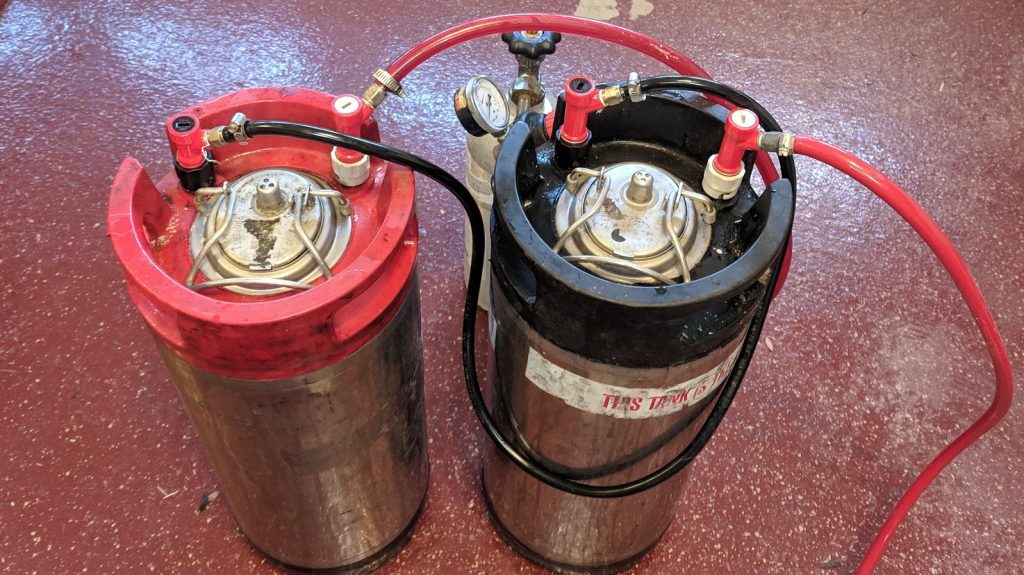











15 thoughts on “exBEERiment | Grain Comparison: Golden Promise vs. Pale Ale Malt In A Scottish Heavy”
I think you need to read up on Ronald Pattinson’s “Scotland” and “Scotland II” if you want to understand and emulate original Scottish brewing.
I also think that current Scottish breweries haven’t (much) in common with the historic Scottish breweries, as they relied mostly upon exports throughout the British empire, which fell apart after WWII.
And Golden Promise was really developed for distillers. The fact that it can be used for brewing too is just a happy coincidence.
What I meant to say in the second paragraph:
I also think that current Scottish breweries haven’t (much) in common with the historic Scottish breweries, as they relied mostly upon exports throughout the British empire, which fell apart after WWII. Due to this, most Scottish breweries got into financial troubles and closed or were bought by English brewers.
Thanks for the recommendation Jürgen, and I’m happy to say I can second it! I am very familiar with Ron’s work, as always he does a fantastic job. Definitely interesting to consider the historical context of what led to common beliefs and actions today.
“I said I uh I uh I uh I uh I uh I uh I uh I uh I uh want the kniiiiife.” That’s all that was running through my head while reading this article. Sweet Eddie Murphy reference in the beer name. Also, another great exbeeriment. Thanks for starting the week with an epic 80’s reference.
I’m wondering what variety of barley is used by Muntons to make their pale ale malt. A quick search on google yielded no results, but it’s possible (though maybe not likely) that they use Golden Promise or a blend including it.
See below
The recipe looks like it’s for 5.5 gallons but it looks like you are racking into 5 gallon kegs to ferment – am I missing something?
No you’re not at all, I adjust my recipes to be “standard” in terms of volume, but ultimately aim for a smaller amount when I plan on fermenting in the pin locks (targeting like 4.5 gallons).
I am a sales rep for Muntons based out of Massachusetts,
One commenter asked what kind of barley would have been used in the Muntons Pale Malt. It is more than likely that Matt was using Planet Pale Malt. Planet is a barley variety, just like Golden Promise is a barley variety. With the exception of heirloom varieties like Maris Otter or GP, typically a barley variety is around for 3-6 years before the farmers move on to a new variety that might have a better yield or disease resistance. A lot of homebrew retailers don’t specify the barley variety if it is a modern barley that doesn’t have the same kind of name recognition. The LHBS I worked at before I was with Muntons just labeled the bin UK 2-row.
Most of what we import at Muntons is Planet or Maris Otter for base malt. Planet is a variety we started bringing into the US last year. It is a spring barley, and most of the barley that ends up in sacks is harvested within a 50 miles radius of our maltings in Stowemarket in Suffolk.
A lot of Scottish brewers and distillers use English-grown malt for the simple reason that more barley is grown in England. Muntons has a new product coming out called ScotMalt for customers that specifically want Scottish barley, It is made from varieties bred mainly for distilling, but will be kilned like our Pale and Extra Pale Ale malts.
I am not surprised by the results of the test, The specification for Planet Pale and Golden Promise Pale are almost exactly the same. Any difference in flavor would come from the difference in barley variety, maybe terrior, and/or just being produced by different maltsters.
Thanks for the insider info, Jason!
Fascinating! Does muntons ship locally in Mass, direct to home Brewers?
Christopher, at this time we only sell to commercial customers. Most of the LHBSs in Mass that I’ve been to carry a selection of our products. Texas Brewing carries our full line and offers same-day flat rate shipping https://txbrewing.com
Do you recall their respective mash pH’s? Was any phosphoric (or other) acid added to control their pH during the mash?
Good write-up! If you don’t mind sharing, what were the brands used? Like Thomas Fawcett GP, or Rahr Pale Ale?
Thanks!
I see where Golden Promise vs Pale Ale malt and Maris Otter vs 2-row have been tested against each other, what I’d like to see is GP vs MO (from the same maltster).